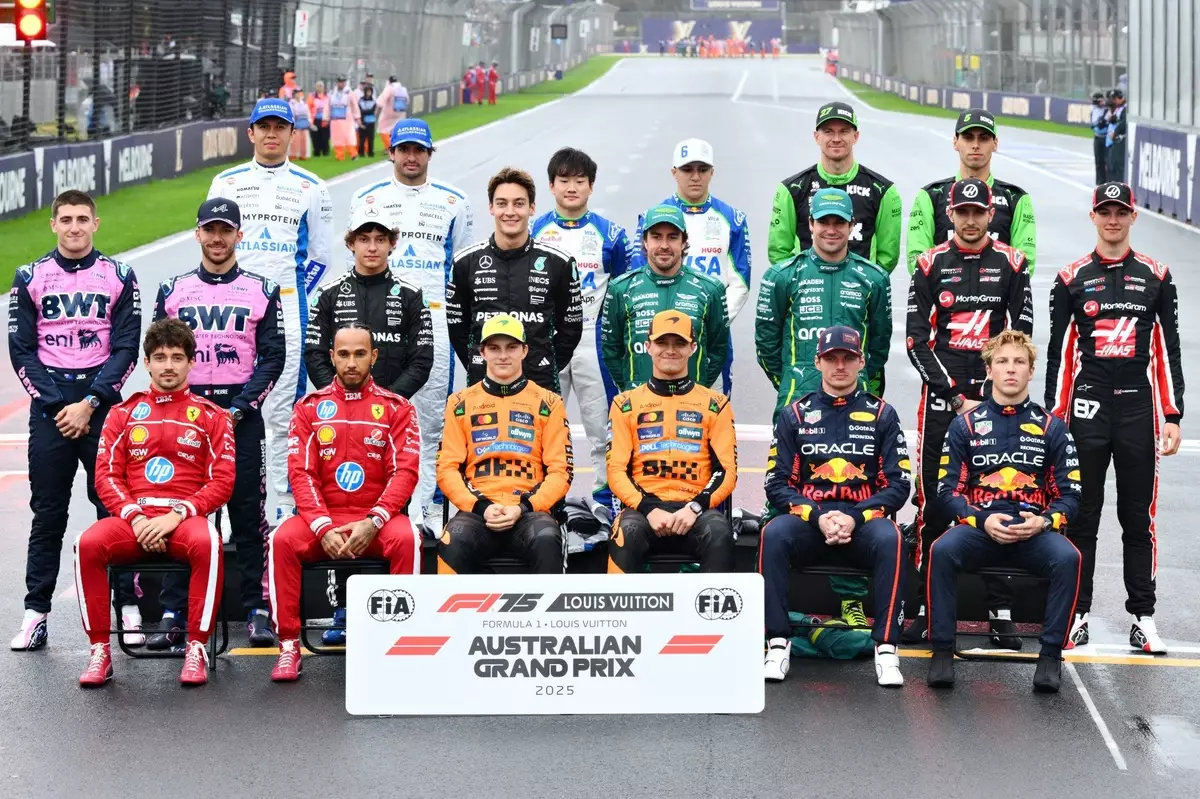The current landscape of Formula 1 is entering a phase of intense speculation and strategic planning, reminiscent of the sport’s infamous “silly season.” As races unfold and seasons mature, the noise surrounding driver movements grows louder, and the 2026 grid is shaping up to be one of the most unpredictable yet. The fluid nature of driver contracts, team dynamics, and emerging talent makes any definitive prediction a challenge—yet, defying simplicity, it’s precisely this complexity that fuels the sport’s ongoing drama. Unlike straightforward football transfers, F1’s driver shuffles hinge upon contractual nuances, performance clauses, and strategic brand ambitions. The stakes are higher than ever, with every whispered rumor hinting at seismic shifts that could alter the sport’s power balance.
The crux of this chaos largely revolves around widespread uncertainty regarding the future of reigning world champion Max Verstappen and the veteran roster at Mercedes. Verstappen’s contract with Red Bull extends until 2028, but internal performance benchmarks, rumored clause triggers, and recent team restructuring suggest that his loyalty might not be as immovable as it appears. The team’s recent upheaval—sacking Christian Horner and launching a new Red Bull Powertrains project—has introduced variables that could influence Verstappen’s course of action. With his current dominance and performance-based clauses, Verstappen appears poised to weigh his options carefully, especially if the new Red Bull regime doesn’t meet his lofty standards or if an opportunity at a top team materializes elsewhere.
Simultaneously, Mercedes faces its own internal questions. As their current lineup’s contract negotiations loom, especially with George Russell’s deal expiring at season’s end, the door opens for strategic shifts. Russell’s impressive but inconsistent performances and the team’s ongoing struggles prompt speculation about whether the Briton will stay or seek a fresh start. Toto Wolff, Mercedes’s principal, has expressed admiration for Verstappen—a sign that, should the Dutchman become available, the Silver Arrows might be ready to strike. Yet, this potential move hinges upon a series of unpredictable factors—including Mercedes’s ability to lure Verstappen away from Red Bull, a feat complicated by current contractual entanglements and the allure of other top teams like Ferrari and Aston Martin.
The Rising Stars and Steady Contenders
While the top-tier seats draw the most attention, the future of several promising talents adds layers of intrigue. Andrea Kimi Antonelli, a current Mercedes junior driver, finds himself at a pivotal crossroads—his contract ending and recent form inconsistent. Mercedes’s willingness to retain him could be decisive, but if they choose to prioritize proven talent or bring in an experienced driver, Antonelli might have to seek opportunities elsewhere—possibly with a less competitive team willing to develop youthful talent. The same applies to other rising drivers like Jak Crawford, currently performing well in Formula 2, who could be eyeing a positional move into F1 simply to gain vital experience.
Meanwhile, mid-field teams such as McLaren and Ferrari are holding their breath, evaluating their current drivers’ performances against future needs. McLaren, having experienced its share of ups and downs, faces tough decisions about whether to stick with established names or gamble on promising replacements. Ferrari, with its own internal struggles to match Red Bull’s dominance, is also pondering future investments—potentially reshaping their driver lineup based on performance metrics and long-term visions.
New Entrants and Uncharted Territory
Perhaps the most captivating aspect of the 2026 driver market is the emerging entry of Cadillac as an entirely new team in F1. Backed by General Motors, Cadillac signals an ambitious push into a sport traditionally dominated by European manufacturers and teams. Unlike established teams, Cadillac’s approach will be founded on building from scratch, which could mean a less competitive debut but long-term potential to disrupt established hierarchies. The key question revolves around their first signing—rumor has it that Sergio Perez, still a strong performer and a Red Bull alumnus, is considered the preferred candidate. Perez’s experience and racecraft could lend credibility to Cadillac’s ambitious début, but securing a seat on such a nascent team will be a challenge for any driver still competing at the top level.
Other veteran drivers such as Valtteri Bottas and Mick Schumacher are perceived as suitable candidates for the team’s initial lineup, leveraging experience to help Cadillac establish itself. Yet, with the American manufacturer determined to challenge the status quo, the 2026 grid may see a mix of seasoned veterans and eager newcomers collaborating under the significance of a fresh flag in F1.
The 2026 driver landscape promises a mix of strategic maneuvering, talented youth, and the allure of new horizons. Whether Verstappen chooses to test new waters, Russell looks for stability or a fresh challenge, or Cadillac’s ambitious project attracts seasoned drivers, the series is on the verge of a transformation. One thing remains certain: the sport’s narrative will be more compelling than ever, driven by the relentless pursuit of excellence and the unpredictable alliances that shape F1’s future.


Leave a Reply